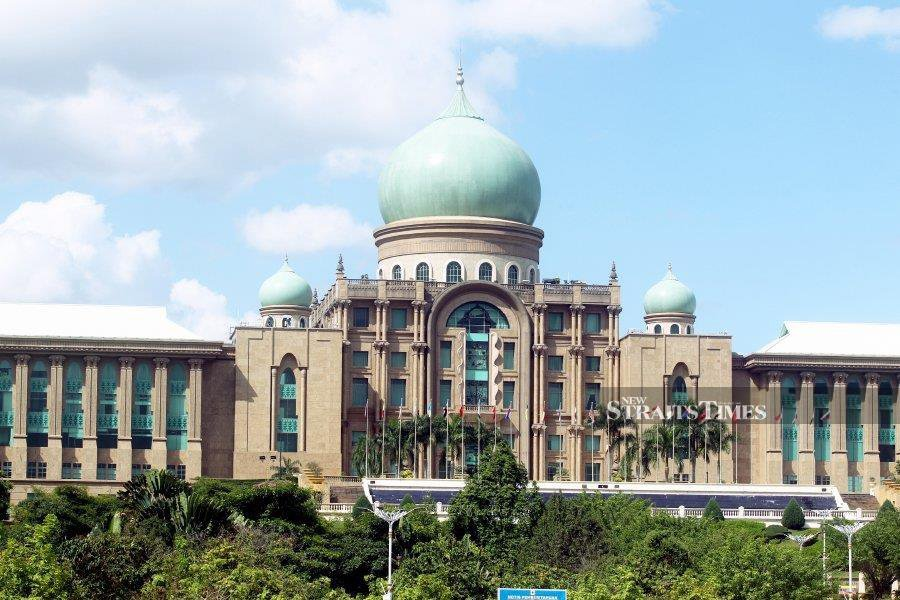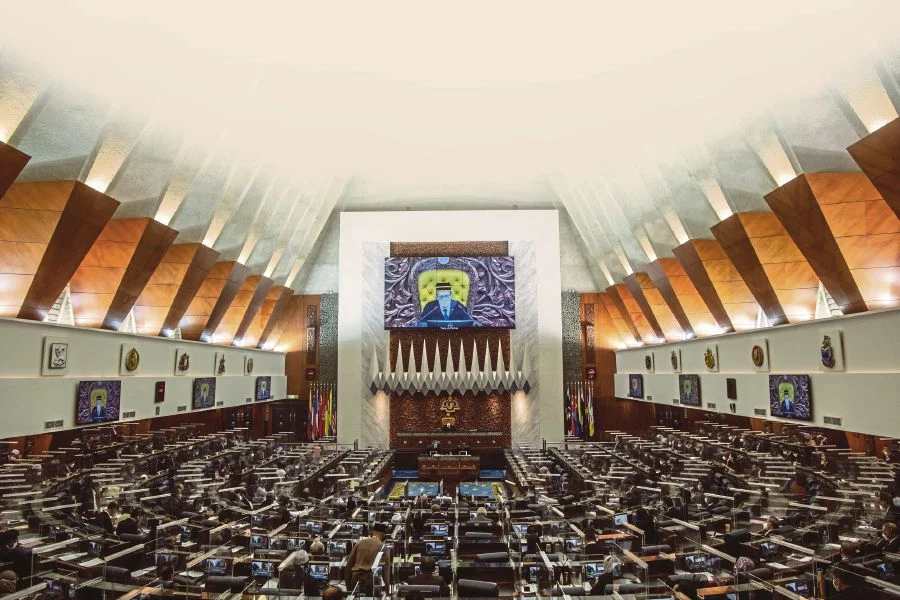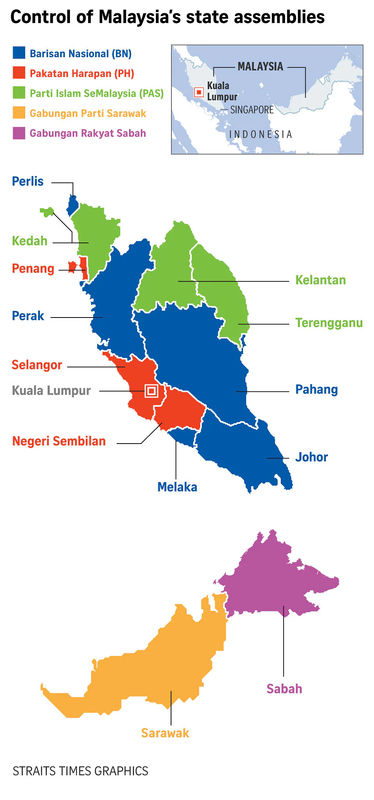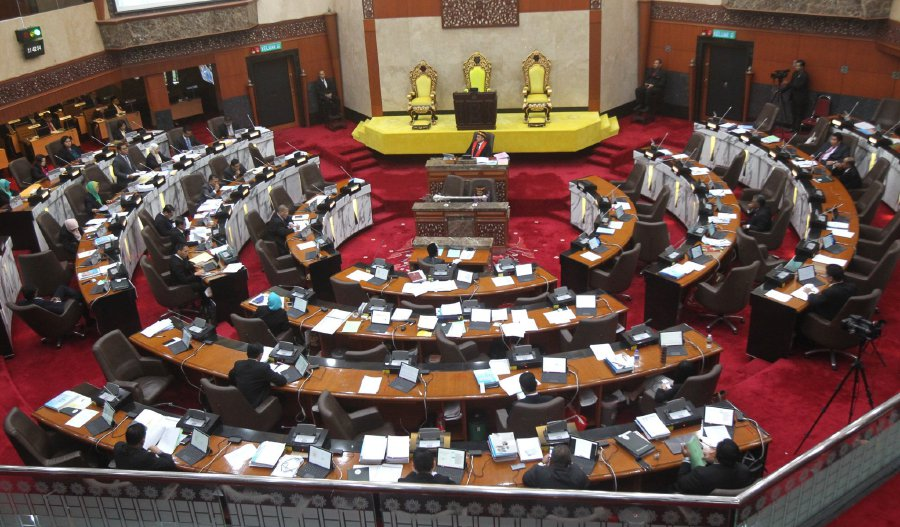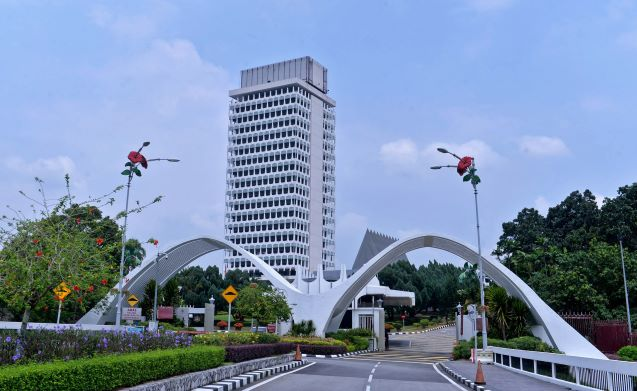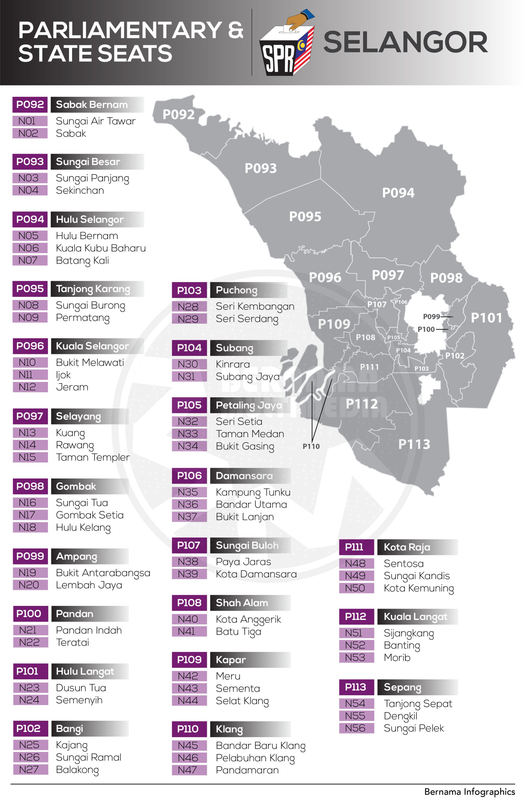#GE15 Explained: What's The Difference Between DUN And Parliament & Are There 2 Elections?
The General Election (GE) can be confusing to many, even to seasoned voters. In this story, we will explain everything you need to know about voting for your assemblypersons and members of parliament (MPs).
It's election season!
And for many first-time voters, you may have a lot of questions about the processes of an election.
According to a survey by the Institute for Democracy and Economic Affairs (IDEAS), 35% of Malaysians don't know the differences between an assemblyperson and a member of parliament (MP), reported Free Malaysia Today in October last year.
Therefore, in this article, we are going to explore the differences between a 'Dewan Undang Negeri' (DUN) and the 'Parliamen', or the state legislative assembly and parliament in English, respectively, and the representatives of each house.
We will also explain whether there are two types of elections, and more!
1. What are Malaysia's governing systems?
Perdana Putra, the office complex of the Prime Minister, located in Putrajaya.
Image via New Straits TimesBefore we begin, it is important to understand how the country's governing systems work.
Malaysia is a parliamentary democracy with a federal constitutional monarchy. On top of that, the country also practises a federation system. Knowing the functions of these different systems work is fundamental to understanding why and how we vote, as well as how the country is governed.
Below is a breakdown of the functions of each system:
i. Constitutional monarchy
Yang di-Pertuan Agong, Al-Sultan Abdullah Ri'ayatuddin Al-Mustafa Billah Shah, at the Dewan Rakyat.
Image via Focus MalaysiaMalaysia has a Paramount Ruler referred to as the Yang di-Pertuan Agong. He is the Supreme Head of the Federation as well as the leader of the Islamic faith in Malaysia.
The King is also the highest commander of the armed forces. His Majesty carries out his duties under the Constitution under the advice of the Prime Minister and the Cabinet.
The country has nine hereditary rulers (Sultans), who take turns to become the Yang di-Pertuan Agong every five years.
ii. Parliamentary democracy
Malaysia's parliamentary democracy is the separation of powers into three parts, namely the Legislative, the Judiciary, and the Executive.
Parliament is the country's highest legislative body. Its main function is to pass, amend, and repeal acts of law. It consists of the Yang di-Pertuan Agong, the Senate (Dewan Negara), and the House of Representatives (Dewan Rakyat).
Members of the House of Representatives are called members of the parliament (MPs), whom the rakyat elect in the General Election (GE) every five years. Yes, one of the ballots we cast during the GE is to choose our MPs.
Meanwhile, members of the Senate are called senators. There are 70 of them in total, where 26 are chosen by the state legislative assemblies and 44 are chosen by the Yang di-Pertuan Agong under the advice of the Prime Minister.
The term of office is three years for a maximum of two terms. The tenure of the Senate is not affected by the dissolution of parliament.
The Judiciary is the court system, which is independent of other fractures of powers, while the Executive is made up of the Conference of Rulers, the Yang di-Pertuan Agong, the Prime Minister, the Cabinet, and the public services. The Executive governs the country according to the laws made by parliament.
Cabinet ministers are appointed by the Yang di-Pertuan Agong under the advice of the Prime Minister. Cabinet members must be selected from members of either houses of parliament, meaning they must be either an MP or a Senator.
iii. Federation system
The graphic shows the current coalitions or parties governing the 13 states in Malaysia.
Image via The Straits TimesMalaysia is a federation of 13 states and three Federal Territories.
Each state has its own constitution and an executive council, which deals with non-federal matters under a Menteri Besar (Chief Minister), answerable to elected state assemblies. Meanwhile, the governance of the Federal Territories lies in the hands of the Ministry of Federal Territories.
Members of the state legislative assembly are called assemblypersons or 'Ahli Dewan Undangan Negeri' (ADUN). Another yes, the second of the ballots we cast during the GE is to choose our assemblypersons.
Federal Territories do not have assemblypersons.
2. What's the difference between an assemblyperson and an MP?
The functions of a state legislative assembly, the house where assemblypersons convene, is to discuss and enact laws related to matters such as land and natural resources (except oil and gas), public facilities, social welfare, youth and sports, culture, and the administration of the state and local governments (your Majilis Daerah, Majlis Perbandaran, and Majilis Bandaraya).
The laws enacted at the state legislative assembly level only affect the jurisdiction within the state. One prime example is the Syariah or Islamic law; the states normally determine the religious law.
As for parliament, the effects of its functions impact the whole nation. Other than passing, amending, and repealing federal laws, the duties of MPs, especially those who are not aligned with the federal government, are also to facilitate check and balance of the federal government's decisions, policies, and executions.
The same can be said for assemblypersons, as their role is also to facilitate check and balance of the state government's decisions, policies, and executions.
The federal government holds various portfolios including external affairs, defence, internal security, civil and criminal law, citizenship, finance, industry, health, and education. The federal government may also make laws to promote the uniformity of the laws of two or more states and it may legislate on any subject at the request of a state legislative assembly.
In short, an assemblyperson is someone who represents you to raise local concerns at the state legislative assembly, while an MP is someone who represents you to raise nationwide concerns at parliament. One represents you at the state level, another represents you at the federal level.
3. When do you cast your vote to elect an assemblyperson?
During a state election. Just like parliament, the state legislative assembly has a five-year term.
Sometimes, the state governments will dissolve their state legislative assemblies along with parliament to make way for both state and national polls to be held together; sometimes not.
It is the Head of State's prerogative under the advice of the Menteri Besar to dissolve the state legislative assembly. In a case like this, a state election must be called 60 days after the state legislative assembly is dissolved.
For the upcoming GE15 on 19 November, Sabah, Melaka, Sarawak, and Johor will not be holding state elections alongside the national poll because these states had held their respective elections within the past three years.
Pakatan Harapan-controlled states (Penang, Selangor, and Negeri Sembilan) and PAS-led states (Kelantan, Terengganu, and Kedah) will also not hold their state elections.
Only electorates in Perlis, Perak, and Pahang (Barisan Nasional-controlled states) will receive two ballot papers to vote in GE15.
4. When do you cast your vote to elect an MP?
During a GE, also referred to as the national poll or national election. Just like the state legislative assembly, parliament has a five-year term.
It is the Supreme Head of the Federation's prerogative under the advice of the Prime Minister to dissolve parliament. In a case like this, a national election must be called 60 days after parliament is dissolved.
The GE15 is slated for 19 November after parliament was dissolved on 10 October.
5. How to form a state government?
A map of Selangor showing the breakdown of its federal constituencies and state constituencies.
Image via @bernamadotcom (Twitter)Under the federation system, Malaysia currently has 518 assemblypersons with each state having a different number of state legislative assembly seats.
Whichever political party or coalition acquires more than half of the state seats will form the state government.
Below is the breakdown of the total number of respective state seats and the number of seats required to form the state government:
– Perlis: 15 (7 and above)
– Kedah: 36 (19 and above)
– Penang: 40 (21 and above)
– Kelantan: 45 (23 and above)
– Perak: 59 (30 and above)
– Terengganu: 32 (17 and above)
– Pahang: 42 (22 and above)
– Selangor: 56 (29 and above)
– Negeri Sembilan: 36 (19 and above)
– Melaka: 28 (15 and above)
– Johor: 56 (29 and above)
– Sabah: 73 (37 and above)
– Sarawak: 82 (42 and above)
Sinar Harian reported that only 117 state legislative assembly seats will be contested in GE15.
6. How to form the federal government?
There are 222 MPs in total. Whichever political party or coalition acquires more than half of the parliamentary seats (112 and above) will form the federal government.
Below is the breakdown of the total number of parliament seats in each state and federal territory:
– Perlis: 3
– Kedah: 15
– Penang: 13
– Kelantan: 14
– Perak: 24
– Terengganu: 8
– Pahang: 14
– Selangor: 22
– Kuala Lumpur: 11
– Putrajaya: 1
– Negeri Sembilan: 8
– Melaka: 6
– Johor: 26
– Sabah: 25
– Labuan: 1
– Sarawak: 31
7. Who chooses the Prime Minister?
The political party or coalition that forms the federal government will collectively elect a candidate to become the Prime Minister.
In other words, the rakyat technically do not choose the Prime Minister.
Normally, the political party or coalition will let its supporters know who is the Prime Minister candidate before the election. Through that, electorates can decide which party to vote for in the hope that the party and its coalition can grasp at least 112 seats to form the federal government.
As of the writing of this story today, 20 October, only Barisan Nasional has confirmed that Datuk Seri Ismail Sabri Yaakob is its coalition's prime minister candidate.
